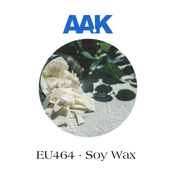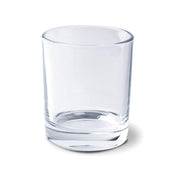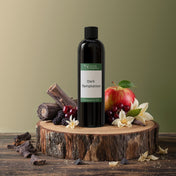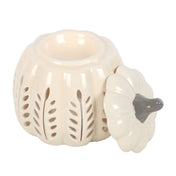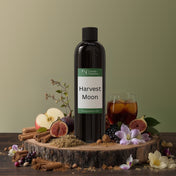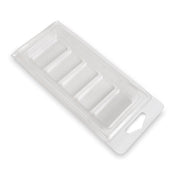Ever lit up a candle you poured your heart into, expecting a delicate waft of fragrance, only to get... nothing? Or perhaps the opposite happened—an overpowering aroma that just doesn’t hit the mark?
Achieving an optimum scent throw is both an art and science. Too subtle and it feels like a missed opportunity; too strong and it becomes overwhelming. But the good news is that achieving that perfect balance isn't as elusive as it might seem. In this guide, we'll answer your burning question: “how much fragrance oil per candle?”, so your scented creations have that just right aroma every time.
Finding That Fragrant Sweet Spot
Crafting the perfect candle is much like composing a melody; you need the right balance of notes to create a harmonious symphony. We’ve already done the hard work for you by crafting complex fragrance oil blends. All you need to do is nail the correct concentration for aromatic perfection!
The Rule of Thumb
Industry experts often adhere to a standard guideline: use fragrance oil concentration between 6-10% of the candle's total weight. In practical terms, for a 100-gram candle, this translates to incorporating 6 to 10 grams of fragrance oil. If percentages aren’t really your thing, you can use our handy fragrance calculator tool to help you nail your candle’s scent concentration.
But remember, this is a starting point. Depending on the specific fragrance oil and wax you're using, you might need to adjust slightly within this range…

Know Your Wax
Wax is the primary foundation of your candle, and while it might seem like a simple, background ingredient, it has a significant impact on how your fragrance performs. The type of wax you choose can determine the intensity and longevity of the scent throw. Here's a closer look:
-
Soy Wax: A natural, softer wax with a lower melting point. While eco-friendly and great for a cleaner burn, it might require more fragrance oil (closer to the 10% mark) because it doesn't always throw scent as strongly as other waxes.
-
Paraffin Wax: A petroleum-based wax that's been a staple in the candle industry. It holds onto and throws scent very well, so you might not need as much fragrance oil.
- Coconut Wax: A rising star in the candle-making world, coconut wax boasts a creamy texture and excellent fragrance retention. Start by opting for an 8% mark for fragrance oils and this wax will ensure a steady release of aroma.
The takeaway? Do some research to understand the characteristics of your chosen wax and adjust the fragrance oil quantity accordingly.
The Trial-and-Scent Technique
One size doesn't fit all in the world of candle-making. Fragrance oils can vary in strength, so always run tests with small batches. Maybe a certain scent shines at 7% while another reaches perfection at 9%. This trial-and-error process is key to consistently crafting candles that strike the right aromatic note.
After making your candles, it's also a good idea to test them both in their solid state (cold throw) and while burning (hot throw) to determine the strength and quality of the scent. This will give you a better understanding if you need to adjust the fragrance oil percentage in the future.
Seasonal Scents
Different fragrances resonate during various seasons. A light, floral fragrance might be appealing in spring but may feel out of place during the cold winter months when cosier, more robust scents are in demand. By understanding these nuances, you can adjust the strength of your fragrance oil to ensure maximum appeal. For a deep dive into choosing scents aligned with seasons, our 'seasonal candles’ guide offers some illuminating insights.

Timings & Temperature
When crafting the perfect candle, knowing when and at what temperature to add your fragrance oil can make all the difference between a delightfully aromatic experience and a lacklustre one. Let's break down the significance of these two factors:
- When to add: Introducing the fragrance oil when the melted wax is at the right temperature ensures optimal binding. A typical guideline is to add the fragrance oil at around 65°C (149°F) for container waxes and around 75°C (167°F) for melt waxes but always refer to the manufacturer’s recommendation for the specific wax you’re using.
- Stir well: After adding the fragrance oil, stir continuously for a couple of minutes to ensure the oil is evenly distributed throughout the wax. This ensures a consistent scent throw from start to finish when the candle is burned.
- Monitor wax cooling: Pour the wax into your candle container when it reaches the recommended pour temperature (typically between 130°F and 160°F or 54°C to 71°C). This temperature helps in achieving a smooth finish and ensures the fragrance oil remains well incorporated.
Time to Mix, Pour & Illuminate
While this guide provides foundational knowledge, remember that the journey of creating the perfect candle is also one of personal exploration and intuition. Every candle you craft is a testament to your passion, creativity and dedication to the art.
Whether it's selecting a wax type or pondering over the perfect fragrance concentration, trust both the wisdom shared here and your inner artisan. The blend of both will guide you towards crafting candles that not only illuminate spaces but also hearts and souls.


